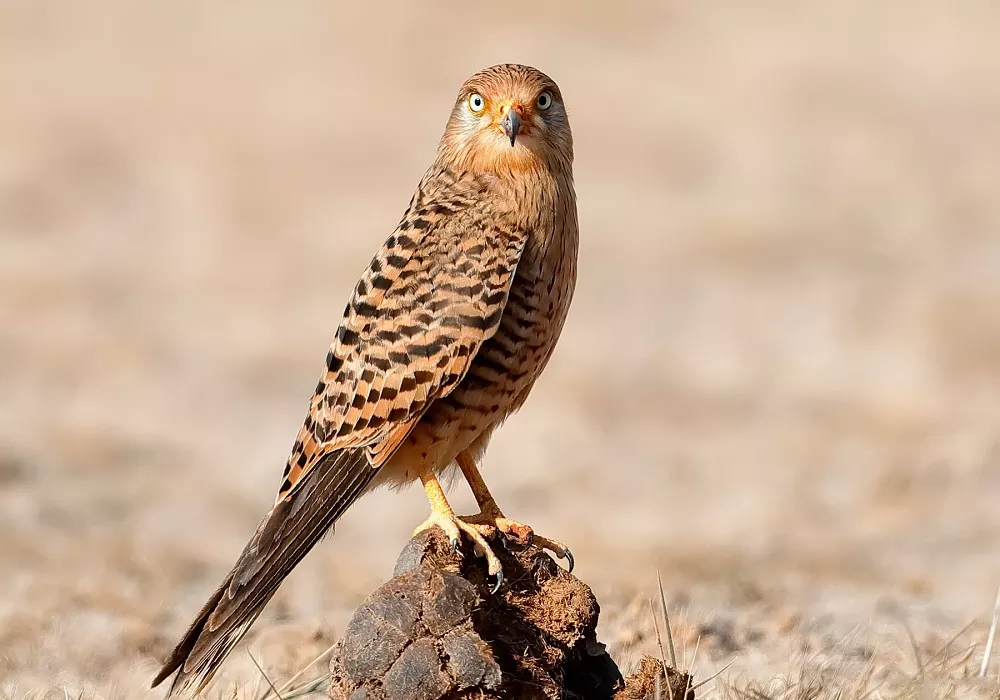The greater kestrel (Falco rupicoloides) or white-eyed kestrel, is a bird of prey belonging to the falcon family Falconidae. It is one of the largest kestrels and is found in open country in southern and eastern Africa.
What does Greater kestrel look like
The greater kestrel is a widespread bird of prey known for its aerial stance. Unlike most other falcons, the greater kestrel’s eyes are usually white, so it is often called “white-eyed kestrel”. Greater kestrels are mostly small or medium-sized, mostly reddish-brown plumage, with black wavy stripes on the back feathers and wing feathers, as well as black stripes on the belly and sides. The head and breast feathers are slightly whitish, while the tail feathers are gray with broad black stripes and white tips.
The female greater kestrel is very similar to the male greater kestrel, but is larger. Chicks tend not to have black wavy stripes on their backs, and their eyes are mostly brown. The irises of adults are pale yellow.
The bird is 29–37 cm (11–15 in) long with a wingspan of 68–84 cm (27–33 in) .
Greater kestrel habitat
The greater kestrel is usually found in open grasslands, but is also found in a variety of open habitats, including semi-deserts, grasslands, savannas, and more.
greater kestrels need scattered trees to roost and nest, and greater kestrels also use facilities such as transmission towers to build nests.
What does Greater kestrel eat
The greater kestrel usually hunts from an exposed perch such as a tree or rock. It also hovers like several other kestrels. It feeds mainly on invertebrates such as grasshoppers, termites, beetles and solifugids. It also takes massive lizards and smmalirds, sometimes snakes. It mainly catches prey on the ground. It is attracted to fires where it catches insects and other prey as they flee from the flames. Excess food may be cached underlying vegetation or stones.


 Facebook
Facebook  Instagram
Instagram  Youtube
Youtube 